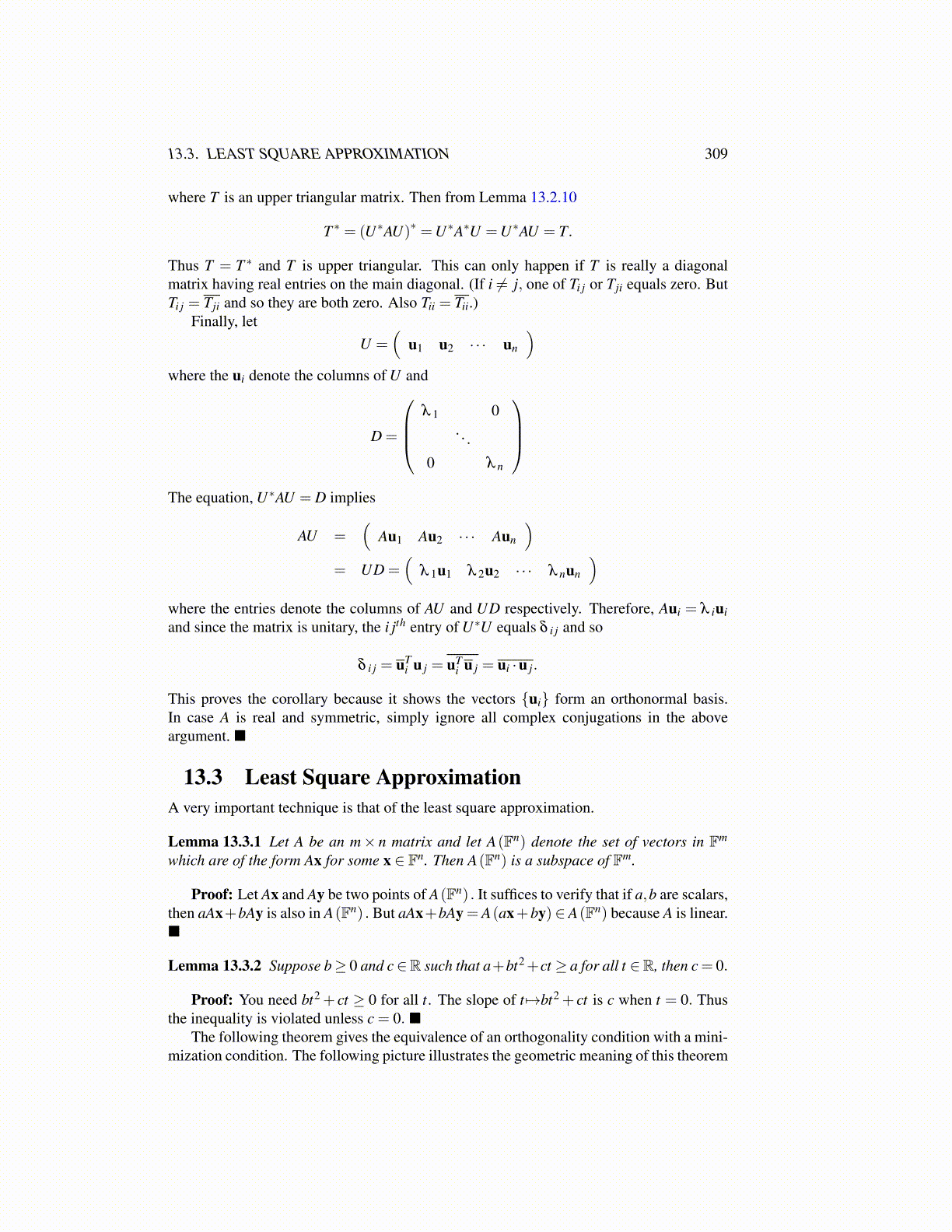
13.3. LEAST SQUARE APPROXIMATION 309
where T is an upper triangular matrix. Then from Lemma 13.2.10
T ∗ = (U∗AU)∗ =U∗A∗U =U∗AU = T.
Thus T = T ∗ and T is upper triangular. This can only happen if T is really a diagonalmatrix having real entries on the main diagonal. (If i ̸= j, one of Ti j or Tji equals zero. ButTi j = Tji and so they are both zero. Also Tii = Tii.)
Finally, letU =
(u1 u2 · · · un
)where the ui denote the columns of U and
D =
λ 1 0
. . .
0 λ n
The equation, U∗AU = D implies
AU =(
Au1 Au2 · · · Aun
)= UD =
(λ 1u1 λ 2u2 · · · λ nun
)where the entries denote the columns of AU and UD respectively. Therefore, Aui = λ iuiand since the matrix is unitary, the i jth entry of U∗U equals δ i j and so
δ i j = uTi u j = uT
i u j = ui ·u j.
This proves the corollary because it shows the vectors {ui} form an orthonormal basis.In case A is real and symmetric, simply ignore all complex conjugations in the aboveargument. ■
13.3 Least Square ApproximationA very important technique is that of the least square approximation.
Lemma 13.3.1 Let A be an m× n matrix and let A(Fn) denote the set of vectors in Fm
which are of the form Ax for some x ∈ Fn. Then A(Fn) is a subspace of Fm.
Proof: Let Ax and Ay be two points of A(Fn) . It suffices to verify that if a,b are scalars,then aAx+bAy is also in A(Fn) . But aAx+bAy = A(ax+by)∈ A(Fn) because A is linear.■
Lemma 13.3.2 Suppose b≥ 0 and c∈R such that a+bt2+ct ≥ a for all t ∈R, then c= 0.
Proof: You need bt2 + ct ≥ 0 for all t. The slope of t 7→bt2 + ct is c when t = 0. Thusthe inequality is violated unless c = 0. ■
The following theorem gives the equivalence of an orthogonality condition with a mini-mization condition. The following picture illustrates the geometric meaning of this theorem